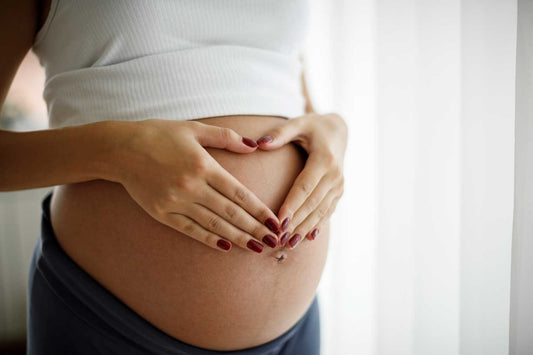Pregnancy induced hypertensions defined as systolic blood pressure, diastolic blood pressure. It is classified as mild, moderate and severe. It occurs in about 7 to 10 percent of all pregnancies. Another type of high blood pressure is chronic hypertension - high blood pressure that is present before pregnancy begins. Pregnancy-induced hypertension is also called toxemia or preeclampsia. It occurs most often in young women with a first pregnancy. It is more common in twin pregnancies, and in women who had PIH in a previous pregnancy. Usually, there are three primary characteristics of this condition, including the following:
1.) High blood pressure (a blood pressure reading higher than 140/90 mm Hg or a significant increase in one or both pressures).
2.) Protein in the urine
3.)Edema (swelling)
Eclampsia is a severe form of pregnancy-induced hypertension. Women with eclampsia have seizures resulting from the condition. Eclampsia occurs in about one in 1,600 pregnancies and develops near the end of pregnancy, in most cases. Eclampsia occurs in about 1 person in 1600 and develops near the end of the pregnancy. HELLP syndrome is a group of physical changes including the breakdown of red blood cells, changes in the liver, and low platelets (cells found in the blood that are needed to help the blood to clot in order to control bleeding).
*What causes pregnancy-induced hypertension (PIH)?
The cause of PIH is unknown. Some conditions may increase the risk of developing PIH, including the following:
- Pre-existing hypertension (high blood pressure)
- Kidney disease
- Diabetes
- PIH with a previous pregnancy
- Mother's age younger than 20 or older than 40
- Multiple foetuses (twins, triplets)
Eclampsia occurs in about 1 person in 1600 and develops near the end of the pregnancy. HELLP syndrome is a group of physical changes including the breakdown of red blood cells, changes in the liver, and low platelets (cells found in the blood that are needed to help the blood to clot in order to control bleeding).
*Why is pregnancy-induced hypertension a concern?
With high blood pressure, there is an increase in the resistance of blood vessels. This may lead the blood flow in many different organ systems in the expectant mother including the liver, kidneys, brain, uterus, and placenta. There are other problems that may develop as a result of PIH. Placental abruption (premature detachment of the placenta from the uterus) may occur in some pregnancies. If untreated, severe PIH may cause dangerous seizures and even death in the mother and foetus. Because of these risks, it may be necessary for the baby to be delivered early, before 37 weeks gestation.
*What are the symptoms of pregnancy-induced hypertension?
The following are the most common symptoms of high blood pressure in pregnancy. However, each woman may experience symptoms differently. Symptoms may include:
- Increased blood pressure
- Protein in the urine
- Edema (swelling)
- Sudden weight gain
- Visual changes such as blurred or double vision
- Nausea, vomiting
- Right-sided upper abdominal pain or pain around the stomach
- Urinating small amounts
- Changes in liver or kidney function tests
*How is pregnancy-induced hypertension diagnosed?
Diagnosis is often based on the increase in blood pressure levels, but other symptoms may help establish PIH as the diagnosis. Tests for pregnancy-induced hypertension may include the following:
- Blood pressure measurement
- Urine testing
- Assessment of edema
- Frequent weight measurements
- Eye examination to check for retinal changes
- Liver and kidney function tests
- Blood clotting tests
*Treatment for pregnancy-induced hypertension:
- Specific treatment for pregnancy-induced hypertension will be determined by your physician based on:
- Your pregnancy, overall health and medical history
- Extent of the disease
- Your tolerance for specific medications, procedures, or therapies
- Expectations for the course of the disease
- Your opinion or preference
The goal of treatment is to prevent the condition from becoming worse and to prevent it from causing other complications. Treatment for pregnancy-induced hypertension (PIH) may include:
- Bedrest (either at home or in the hospital may be recommended).
- Hospitalization (as specialized personnel and equipment may be necessary).
- Magnesium sulfate (or other antihypertensive medications for PIH).
- Fetal monitoring (to check the health of the foetus when the mother has PIH) may include:
- Fetal movement counting - keeping track of fetal kicks and movements. A change in the number or frequency may mean the foetus is under stress.
- Nonstress testing - a test that measures the fetal heart rate in response to the foetus' movements.
- Biophysical profile - a test that combines nonstress test with ultrasound to observe the foetus.
- Doppler flow studies - type of ultrasound that uses sound waves to measure the flow of blood through a blood vessel.
- Continued laboratory testing of urine and blood (for changes that may signal worsening of PIH).
- Medications, called corticosteroids, that may help mature the lungs of the foetus (lung immaturity is a major problem of premature babies).
- Delivery of the baby (if treatments do not control PIH or if the foetus or mother is in danger). Caesarean delivery may be recommended, in some cases.
*Prevention of pregnancy-induced hypertension:
Early identification of women at risk for pregnancy-induced hypertension may help prevent some complications of the disease. Education about the warning symptoms is also important because early recognition may help women receive treatment and prevent worsening of the disease.





